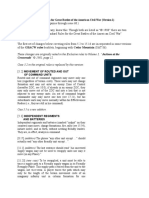Stability of The Equilibrium: Reference Material For International Finance Course For Ex-MBA-2016-17
Stability of The Equilibrium: Reference Material For International Finance Course For Ex-MBA-2016-17
Uploaded by
amanCopyright:
Available Formats
Stability of The Equilibrium: Reference Material For International Finance Course For Ex-MBA-2016-17
Stability of The Equilibrium: Reference Material For International Finance Course For Ex-MBA-2016-17
Uploaded by
amanOriginal Description:
Original Title
Copyright
Available Formats
Share this document
Did you find this document useful?
Is this content inappropriate?
Copyright:
Available Formats
Stability of The Equilibrium: Reference Material For International Finance Course For Ex-MBA-2016-17
Stability of The Equilibrium: Reference Material For International Finance Course For Ex-MBA-2016-17
Uploaded by
amanCopyright:
Available Formats
Reference material for International Finance course for Ex-MBA-2016-17
[Type here]
The demand of dollars in the rupee dollar market is coming from the Indian
demand for US goods and services. The downward sloping demand curve
indicates that the higher the rupee price of dollar , the more expensive US
goods will be to the Indian buyers, so the smaller the qty of dollar demanded.
Similarly the supply curve is the supply of dollars in the rupee dollar market
and comes from US buyers of Indian goods and services. The upward sloping
curve indicates that as US residents receive more rupees per dollar , they will
buy more from India and hence supply more dollars to the market.
The initial equilibrium point is A, where the exchange rate is Rs 50/$. Now
suppose there is an increase in demand for US products by Indian buyers. This
increased demand will cause demand curve to shift from D1 to D2 ( in fig (i))
and the new equilibrium point will be B at Rs 60/$.
The supply may also change . Suppose that the US starts at point B with a
Rs60/$ exchange rate. If US consumers demand Indian products more than
before, this will result in a supply curve shift from S1 to S2 ( in the fig ii) and
lowers the value of dollar from Rs60/$ to Rs 45 /$.
Stability of the Equilibrium
We also notice that,
if S temporarily falls below 50, an excess-demand for $ is created
This would force $ to rise in value, thus pushing up S
Similarly,
if S temporarily goes above 50, an excess-supply of $ is created
This would force $ to fall in value,thus pushing down S
Reference material for International Finance course for Ex-MBA-2016-17
[Type here]
Thus, market forces would ensure that S stays at Rs.50 per $ i.e the
equilibrium is a stable equilibrium unless there is a structural shift of the
curve. Function of changes in technology, preferences, competitors. etc.
Equilibrium S Under Fixed System
If India were following a fixed-exchange-rate regime, it can keep S at
whatever level it wants ( forcefully through price controls)
So, India can keep S at 35 (Rupees per $).( to reduce import bills may be
from import of computers)
Sure, at this S, there is an excess-demand for $, but no market force can
increase official S. What will happen ?
black-markets may arise due to pent-up demand, assuming that the
Govt. does not intervene.
Similarly, India can keep S at 60 ( to make their shirts more competitive in
US markets)
At this exchange-rate, there would be an excess-supply of $,
but, again, no market force can reduce the S
Equilibrium S Under Floating System
What if India follows a completely floating regime?
Then, it cannot/ will not change or influence S. The S will
automatically vary as per the market forces
But, what if it follows a managed floating exchange-rate regime?
Then, it can keep S where it wants by intervening in the forex market,
if it has necessary foreign-currency reserve
But, the foreign(US) central-bank can complement or offset this effort.
Exchange Market Intervention
For example, if Indian Govt. wants S at 35, there it would supply the excess-
demand for $ at that rate and the Govt. would have to sell additional $
@Rs.35/$ from its reserves.
Then, Private DEM$ = Private SUP$ + Govt SUP$ (though Private DEM$
Private SUP$)
Anyway, this would lead to an increase in US money supply (=> inflation in
USA) and a decrease in Indian money supply (=> deflation in India)
Sterilized Intervention
To neutralize or sterilize this market intervention, Indian central-bank
can engage in Open market operation:
Reference material for International Finance course for Ex-MBA-2016-17
[Type here]
buying TBs (for cash rupees) from market and thus putting back the
excess Rs supply that had just been sucked out from the market due
to $ selling.
At the end of the sterilized intervention,
Indian central bank would have less $,(in lieu of selling $)
but no change in domestic money supply.
US central bank can do the reverse:
selling TBs to people (for cash $) to suck out the excess $ supplied in
the mkt ( by Indian Govt) and
thus decreasing the US money supply]
to avoid inflation in US
Advantages and Disadvantages of a floating exchange rate
Advantages :
Automatic balance of payments adjustment :
Any balance of payments disequilibrium will tend to be rectified by a
change in the exchange rate.
For example, if a country has a balance of payments deficit then the
currency should depreciate. This is because imports will be greater
than exports meaning the supply of home currency on the foreign
exchange market will be increasing as importers sell currency to pay for
the imports. This will drive the value of the home currency down.
The effect of the depreciation should be to make your exports cheaper
and imports more expensive, thus increasing demand for your goods
abroad and reducing demand for foreign goods in your own country,
therefore dealing with the balance of payments problem. Conversely, a
balance of payments surplus should be eliminated by an appreciation of
the currency
Freeing internal policy :
With a floating exchange rate, balance of payments disequilibrium
should be rectified by a change in the external price of the currency.
However, with a fixed rate, curing a deficit would require the Govt.
forcefully to bring down the demand for foreign exchange, resulting in
unpleasant consequences for the whole economy such as
Reference material for International Finance course for Ex-MBA-2016-17
[Type here]
unemployment. ( units relying on imported raw materials for their final
products would suffer).
You might also like
- Bohemia IndustriesDocument13 pagesBohemia Industriesaman100% (1)
- Sabya BhaiDocument6 pagesSabya BhaiamanNo ratings yet
- Retinal Detachment AAO Monographs 2009 PDFDocument277 pagesRetinal Detachment AAO Monographs 2009 PDFcesar100% (2)
- Squalane: From The Sharks in Our Creams To The Serum of Our DreamsDocument18 pagesSqualane: From The Sharks in Our Creams To The Serum of Our DreamsRaena PendrasNo ratings yet
- Week 2Document18 pagesWeek 2Yd LeeNo ratings yet
- Terms and Concepts On Foreign Exchange Rate ManagementDocument54 pagesTerms and Concepts On Foreign Exchange Rate Managementsonu_saisNo ratings yet
- Session 12, 13 & 14 - Open EconomyDocument73 pagesSession 12, 13 & 14 - Open EconomyAyusha MakenNo ratings yet
- The Impact of The Devaluation of CurencyDocument25 pagesThe Impact of The Devaluation of CurencycooldudeakhilNo ratings yet
- Currency and FinancialsDocument38 pagesCurrency and FinancialsSammy MosesNo ratings yet
- Chapter 4 Unit IV Exchange RateDocument32 pagesChapter 4 Unit IV Exchange Rateeelapurkait3No ratings yet
- Foreign Exchange RateDocument7 pagesForeign Exchange Ratetushiraditya2No ratings yet
- International Finance Assigment UpdatedDocument6 pagesInternational Finance Assigment UpdatedVaibhav RajoreNo ratings yet
- foreign exchangeDocument7 pagesforeign exchangeaishwaryas120208No ratings yet
- Currency DepreciationDocument18 pagesCurrency DepreciationRamesh GoudNo ratings yet
- Demand For Dollar: Profile of Currency DepreciationDocument2 pagesDemand For Dollar: Profile of Currency Depreciationrahul_khanna4321No ratings yet
- First 6 Questions AssignmentDocument5 pagesFirst 6 Questions AssignmentNiaz MorshedNo ratings yet
- Chapter 4 Unit IV Exchange RateDocument9 pagesChapter 4 Unit IV Exchange Rateeelapurkait3No ratings yet
- Chapter-9 (Parkin, M) : The Exchange Rate and The Balance of PaymentDocument31 pagesChapter-9 (Parkin, M) : The Exchange Rate and The Balance of PaymentAfiqul IslamNo ratings yet
- Introduction/ Statement of Purpose: Historical AspectDocument5 pagesIntroduction/ Statement of Purpose: Historical Aspectsharanya renjitNo ratings yet
- Free-Floating ERDocument6 pagesFree-Floating ERSam CatlinNo ratings yet
- Presentation 1Document36 pagesPresentation 1Mohab HosnyNo ratings yet
- Macroeconomics - Chapter 12Document19 pagesMacroeconomics - Chapter 12tomshave28No ratings yet
- Practice Questions For End TermDocument3 pagesPractice Questions For End TermpikuNo ratings yet
- Foreign Exchange RateDocument9 pagesForeign Exchange RateDimple DaswaniNo ratings yet
- The Balance of Payments, ExchangeDocument16 pagesThe Balance of Payments, ExchangeMoazzam AzadNo ratings yet
- Monetary System - EDIDocument13 pagesMonetary System - EDIextraforextra99No ratings yet
- BT LMSDocument5 pagesBT LMSDuyên TrịnhNo ratings yet
- Impact of Exchange Rate Fluctuations On India's Exports and ImportsDocument10 pagesImpact of Exchange Rate Fluctuations On India's Exports and Importsnavyaa202007No ratings yet
- Section 6 Exchange rateDocument19 pagesSection 6 Exchange ratewanghongliang12No ratings yet
- Foreign Exchange RateDocument20 pagesForeign Exchange RatePrabhneet100% (1)
- Rupee Depriciation and Its ConsequencesDocument7 pagesRupee Depriciation and Its ConsequencesAkriti ChandraNo ratings yet
- Disequilibrium in Balance of PaymentsDocument6 pagesDisequilibrium in Balance of PaymentsAmanda RuthNo ratings yet
- Disequilibrium in Balance of PaymentsDocument6 pagesDisequilibrium in Balance of PaymentsAmanda RuthNo ratings yet
- Lectures - Open Economy AnalysisDocument61 pagesLectures - Open Economy AnalysisSayan MitraNo ratings yet
- Foreign Exchange RateDocument7 pagesForeign Exchange RateFari ShahNo ratings yet
- Chapter-9 (Parkin, M) : The Exchange Rate and The Balance of PaymentDocument36 pagesChapter-9 (Parkin, M) : The Exchange Rate and The Balance of PaymentAshik RahmanNo ratings yet
- Exchange Rate ManagementDocument31 pagesExchange Rate Managementmansoorishabnam45No ratings yet
- De-Valuation of The Indian RupeeDocument10 pagesDe-Valuation of The Indian RupeeNishtha SharmaNo ratings yet
- If There Are Higher Interest Rates in Home Country Then It Will AttractDocument7 pagesIf There Are Higher Interest Rates in Home Country Then It Will Attractvishal1152No ratings yet
- IS-LM ModelDocument31 pagesIS-LM ModelAbdoukadirr SambouNo ratings yet
- Economics NotesDocument51 pagesEconomics NotesDeborahNo ratings yet
- T NG H P GraphsDocument8 pagesT NG H P GraphsAnnie DuolingoNo ratings yet
- BopDocument17 pagesBopthensureshNo ratings yet
- Assignment 2 MacroDocument6 pagesAssignment 2 MacroDeepa KhatriNo ratings yet
- Currency.': in Simple Words, Exchange Rate Is The Price of A Nation's Currency in Terms of AnotherDocument6 pagesCurrency.': in Simple Words, Exchange Rate Is The Price of A Nation's Currency in Terms of AnotherNeel NarsinghaniNo ratings yet
- Unit 4 IBMDocument24 pagesUnit 4 IBMDeeparsh SinghalNo ratings yet
- Mechanism of Foreign ExchangeDocument11 pagesMechanism of Foreign ExchangeSaurav SubediNo ratings yet
- 6.3 Foreign Exchange RateDocument33 pages6.3 Foreign Exchange Ratezainabwaqas2007No ratings yet
- Unit 4Document8 pagesUnit 4Aditya SinghNo ratings yet
- Chapter 25 NotesThe Exchange Rate and The Balance of PaymentsDocument6 pagesChapter 25 NotesThe Exchange Rate and The Balance of PaymentsJocelyn WilliamsNo ratings yet
- (A) Discuss Equilibrium in The Market and Analyse ChangesDocument3 pages(A) Discuss Equilibrium in The Market and Analyse ChangesAlex GanNo ratings yet
- ECS1601 Chapter 16 Narrated Slides Foreign Sector Exchange RatesDocument31 pagesECS1601 Chapter 16 Narrated Slides Foreign Sector Exchange RatesConnor Van der MerweNo ratings yet
- International EconomicsDocument58 pagesInternational EconomicsMadushaNo ratings yet
- Currency Exchange RatesDocument15 pagesCurrency Exchange RatesDrax2345No ratings yet
- BALANCE OF PAYMENTDocument15 pagesBALANCE OF PAYMENTakshatme8090No ratings yet
- NOTES-FOREX2021Document8 pagesNOTES-FOREX2021rameshkumar27febNo ratings yet
- UNIT-II - Exchange Rate SystemDocument38 pagesUNIT-II - Exchange Rate SystemSarath kumar CNo ratings yet
- Foreign Exchange RatesDocument8 pagesForeign Exchange RatesTatenda UyaNo ratings yet
- Exchange RatesDocument46 pagesExchange RateskwekutwumasimensahNo ratings yet
- Exchange Rate: DefinitionDocument10 pagesExchange Rate: Definitionknowledge worldNo ratings yet
- ForexDocument6 pagesForexVPPRO GAMERSNo ratings yet
- Macroeconomic Interaction With World Economy: Atulan GuhaDocument31 pagesMacroeconomic Interaction With World Economy: Atulan GuhaIQBAL NASEEM IQBAL NASEEMNo ratings yet
- Flexible Budgets, Variances, and Management Control: ManasweeDocument46 pagesFlexible Budgets, Variances, and Management Control: ManasweeamanNo ratings yet
- Clay Bottle DescriptionDocument1 pageClay Bottle DescriptionamanNo ratings yet
- Approved CAE GuidelineDocument50 pagesApproved CAE GuidelineamanNo ratings yet
- Indian Value System: Ethics. Aristotle in His N.E Part Company WithDocument16 pagesIndian Value System: Ethics. Aristotle in His N.E Part Company WithamanNo ratings yet
- HRM - Sustainability Management - 2016-2018 - PPT I - Introduction and Manpower PlanningDocument90 pagesHRM - Sustainability Management - 2016-2018 - PPT I - Introduction and Manpower Planningaman0% (1)
- Rice Mills of Jharkhand and Their Pollutions Problems by Er. S.K.singhDocument3 pagesRice Mills of Jharkhand and Their Pollutions Problems by Er. S.K.singhamanNo ratings yet
- Monmouth Inc Figures in Million $Document3 pagesMonmouth Inc Figures in Million $amanNo ratings yet
- MockExerciseDocument50 pagesMockExerciseamanNo ratings yet
- 1672 Market SignalsDocument8 pages1672 Market Signalsaman100% (1)
- Maruti SuzukiDocument12 pagesMaruti SuzukiamanNo ratings yet
- Interwar PeriodDocument2 pagesInterwar PeriodamanNo ratings yet
- X (No. of Cups) Y (No of Plates) 120 160 Profit $/unit 2 1.5Document9 pagesX (No. of Cups) Y (No of Plates) 120 160 Profit $/unit 2 1.5amanNo ratings yet
- Maruti SuzukiDocument12 pagesMaruti SuzukiamanNo ratings yet
- Ambuja Cement Annual Report 2015 Web Final - PDF 13Document170 pagesAmbuja Cement Annual Report 2015 Web Final - PDF 13amanNo ratings yet
- BA7108 Written CommunicationDocument5 pagesBA7108 Written CommunicationamanNo ratings yet
- Transfer PricingDocument19 pagesTransfer PricingamanNo ratings yet
- Case Analysis High Street 05.01.2017Document2 pagesCase Analysis High Street 05.01.2017amanNo ratings yet
- Zomato Brand ProfileDocument48 pagesZomato Brand ProfileamanNo ratings yet
- Q1. Why Does MR Butler Have To Borrow So Much Money To Support This Profitable Business?Document2 pagesQ1. Why Does MR Butler Have To Borrow So Much Money To Support This Profitable Business?amanNo ratings yet
- COMA Assignment Answer 1: Contribution Per KG (RS.) 13.33 8.33 8.89Document6 pagesCOMA Assignment Answer 1: Contribution Per KG (RS.) 13.33 8.33 8.89amanNo ratings yet
- Manron Ltd. - HRM PoliciesDocument6 pagesManron Ltd. - HRM PoliciesamanNo ratings yet
- How To Invest in Social CapitalDocument18 pagesHow To Invest in Social CapitalamanNo ratings yet
- 5e Lesson Plan SBDocument3 pages5e Lesson Plan SBapi-642706138No ratings yet
- Statistics in Education - Made SimpleDocument26 pagesStatistics in Education - Made SimpleSatheeshNo ratings yet
- Polymer Testing: Tapas Kuila, Saswata Bose, Ananta Kumar Mishra, Partha Khanra, Nam Hoon Kim, Joong Hee LeeDocument8 pagesPolymer Testing: Tapas Kuila, Saswata Bose, Ananta Kumar Mishra, Partha Khanra, Nam Hoon Kim, Joong Hee LeesamiNo ratings yet
- Theory of Machine MicroprojectDocument19 pagesTheory of Machine Microproject130 Vipul ZopeNo ratings yet
- These Changes Are Originally Noted in The Exclusive Rules To Volume 5, "Jackson at The Case 5.2 in The Original Rules Is Replaced by This VersionDocument5 pagesThese Changes Are Originally Noted in The Exclusive Rules To Volume 5, "Jackson at The Case 5.2 in The Original Rules Is Replaced by This VersionmattNo ratings yet
- PALEDocument5 pagesPALEDaryll Gayle AsuncionNo ratings yet
- GKNM 20th liveSURGEDocument3 pagesGKNM 20th liveSURGEdinesh dhanasekaranNo ratings yet
- Reviews: Chemical Recycling of Waste Plastics For New Materials ProductionDocument11 pagesReviews: Chemical Recycling of Waste Plastics For New Materials ProductionbrianNo ratings yet
- Parts and Functions of AnimalsDocument41 pagesParts and Functions of AnimalsRaz QuipedNo ratings yet
- Claire NguyenDocument8 pagesClaire NguyenptmwritersNo ratings yet
- Usana Letter 4Document3 pagesUsana Letter 4Lawrence KennyNo ratings yet
- E267 Manipon Jan Aries G. (Learning Activity 6)Document3 pagesE267 Manipon Jan Aries G. (Learning Activity 6)Jan Aries ManiponNo ratings yet
- ABB Motors - General Purpose 2Document47 pagesABB Motors - General Purpose 2Vilius BukysNo ratings yet
- Bill Federer - Columbus MiscalculationDocument22 pagesBill Federer - Columbus MiscalculationLloydNo ratings yet
- Gem Stone AstrologyDocument7 pagesGem Stone AstrologyNafiz NiazNo ratings yet
- Contractor Pre Qualification - Registration Document (0055Document9 pagesContractor Pre Qualification - Registration Document (0055Sunali GoenkaNo ratings yet
- Intellectual Property: INFS 452 - Computer Ethics & SocietyDocument14 pagesIntellectual Property: INFS 452 - Computer Ethics & Societyفضل الفقيةNo ratings yet
- Classifieds 2024-03-14 - B - 39Document1 pageClassifieds 2024-03-14 - B - 39Coastal Breeze NewsNo ratings yet
- Chapter 2 - The Chemistry of LifeDocument23 pagesChapter 2 - The Chemistry of LifeDorothy AtilanoNo ratings yet
- Week 2 Ucsp LPDocument4 pagesWeek 2 Ucsp LPJemson Ferraren100% (1)
- Falcon 200DX FLTDECK HSIADICASDocument10 pagesFalcon 200DX FLTDECK HSIADICAST.SelkirkNo ratings yet
- Alexander The Great & SCMDocument2 pagesAlexander The Great & SCMJeff SikkemaNo ratings yet
- Edtechphilosophy AllenDocument3 pagesEdtechphilosophy Allenapi-466283800No ratings yet
- Grade X Worksheet Chapter Wise RubyDocument13 pagesGrade X Worksheet Chapter Wise RubyAditya GoelNo ratings yet
- SVM-18059-2 R32 Rav-Rm 1krtp-E enDocument113 pagesSVM-18059-2 R32 Rav-Rm 1krtp-E enMarcelo Aguiar de OliveiraNo ratings yet
- PCB Design Software CADSTAR Board Modeler Lite TutorialDocument92 pagesPCB Design Software CADSTAR Board Modeler Lite TutorialHemanth KumarNo ratings yet
- Vaidehi Mahajan - HETP Assignment 2 v2Document4 pagesVaidehi Mahajan - HETP Assignment 2 v2Vaidehi MahajanNo ratings yet
- Shapoorji Pallonji and Company Private LimitedDocument5 pagesShapoorji Pallonji and Company Private LimitedPrabhakar DubeyNo ratings yet
















































































































